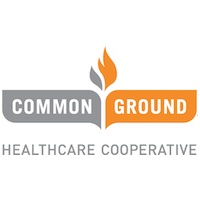
WHA CEO Borgerding talks data, financial impact of COVID-19

Hospitals across the state have upended their operations in response to the new coronavirus crisis.
They’ve halted elective procedures, shuffled units and boosted telehealth offerings.
Meanwhile, some are expanding testing labs to increase the state’s capacity to diagnose COVID-19.
In a recent interview, Wisconsin Hospital Association CEO Eric Borgerding talked about the financial toll these measures are having on hospitals. He also provided an update on efforts to improve public data on the pandemic, including information on intensive care unit capacity.
Edited excerpts are below.
WHN: What’s the financial impact of canceling elective procedures and other steps that hospitals are taking to prepare for the COVID-19 crisis?
EB: It ranges from hospital to hospital, but I talked to one of our rural hospital CEOs two days ago, he said their revenue is down 40 to 50 percent on a weekly basis… If you factor in the impact on hospitals, then also the impact on clinics and the procedures and appointments that are being canceled there, it’s net about $262 million in revenue not coming in the door in Wisconsin a week. That’s net, not charges. That’s actual reimbursement.
And this has been going on now for a couple of weeks. Hospitals are taking these steps at the direction of the federal government. We’re not disputing that these are wise steps, but hospitals are taking steps to prepare for COVID-19 and at the same time some are standing, in a lot of ways, almost empty.
I know that there are hospitals that have furloughed staff because they’re just not needed right now. But, for the most part, a lot of those workers are still being paid. Because whenever the limitations on procedures goes away, we need those people to come back. It’s putting a fairly significant and growing financial strain on hospitals all across Wisconsin. And every day that goes by that strain becomes larger and more widespread in terms of its severity.
WHN: Do you anticipate that some smaller hospitals may shut down as a result of this?
EB: We are concerned about the short, medium and long-term impact of the loss of $262 million a week in net operating revenue. We’re very concerned about the ongoing impact of that and I do think that it could threaten the viability of some of our smaller, maybe more at-risk hospitals if this continues for the foreseeable future.
WHN: The latest federal stimulus package included $100 billion for healthcare providers. What impact will this have on Wisconsin hospitals?
EB: We still do not know how or when those dollars will flow. We are as anxious for information on that assistance as anyone. The [Legislative] Fiscal Bureau was quoted in their analysis saying it’s unknown how much funding, if any, Wisconsin healthcare providers will receive. And I can’t at this point offer anything concrete that would disagree with what the Fiscal Bureau said.
WHN: As you meet with lawmakers about this, what is your message to them?
EB: We understand that there are some hospitals and states across the country that are dealing with these issues at a greater level than we are, at least currently. But, the impact of being shut down is significant here, and that’s a good part of what those dollars were meant to address.
This is about making sure we are stabilizing our hospitals in Wisconsin. Making sure that the short-term impact of COVID-19, and the preparations that are taking place don’t damage them in the medium or long-term.
WHN: State and federal officials are working on a field hospital at the State Fair Grounds in West Allis to prepare for a surge of COVID-19 patients. What role are area health systems playing in this project?
EB: They’re providing a lot of the administrative support. The administrative structures and leadership are coming together from existing or recently retired hospital and health system leaders. They’re also very closely coordinating with the state and local governments, so the (State Emergency Operations Center) and the local EOC in Milwaukee, and other emergency government and planning agencies, to get a good sense of what’s needed, get a good sense of the supplies that are necessary, and get a good sense of the staffing that is going to be necessary. And then once they have that in place, and I think that’s moving along quite nicely, then going to (Federal Emergency Management Agency) and the federal government for resources there, first and foremost. And then also trying to make contingency plans for what can be provided from within those health systems themselves to help stand up the alternate care facility.
WHN: On Friday, Department of Health Services Secretary-designee Andrea Palm said the state is working with hospitals to provide more real-time data on ICU bed occupancy and the number of available ventilators. When will this information be available to the public?
EB: No one wants more data available than the hospitals in Wisconsin. We need data in order to get an accurate picture of what’s going on in the state, do planning, those kinds of things. So do other decision-makers like lawmakers, policymakers, the governor. We need robust sets of data that help us not only plan, but gauge what the impact is of this pandemic in Wisconsin. And gauge it over a period of time. Looking at data on a daily basis is important, but you also have to have that information over time.
We worked with the State Emergency Operations Center to add data points to that system that has been in existence. It’s not a system that WHA runs. It’s not a system that we administer like the hospital data that we collect at the Wisconsin Hospital Association Information Center. And it’s a system that doesn’t so readily have, for example, COVID-19 hospitalizations in it. Those things have been added. We’ve been a strong advocate for adding that type of data to be collected.
WHN: What additional information will be added?
EB:
Some of the things that can be really important that we think are coming next are back to those gauges of the impact of COVID on healthcare systems’ capacity. We know total hospitalizations, which is a rate of positive COVID tests. What we need, and I expect we’ll see very soon, is COVID positive hospitalizations on a daily basis. So, how many COVID patients are occupying inpatient and ICU beds today? How many patients under investigation are there today in the hospital? Because when they have to be monitored and isolated in an inpatient facility, that’s essentially the same as taking up a bed of your COVID-positive patient. And then also ideally being able to look at that, say, regionally. We think that all of these are critical pieces of information that should be not only gathered but also reported. Other states are doing this. Wisconsin should be doing this.
Wisconsin Health News is removing the password on all stories related to the coronavirus. For the latest developments follow us on Twitter at @wihealthnews or check out our website. For complete healthcare coverage, sign up for a free trial to our daily email newsletter.





























.jpg?bwg=1612548324)

